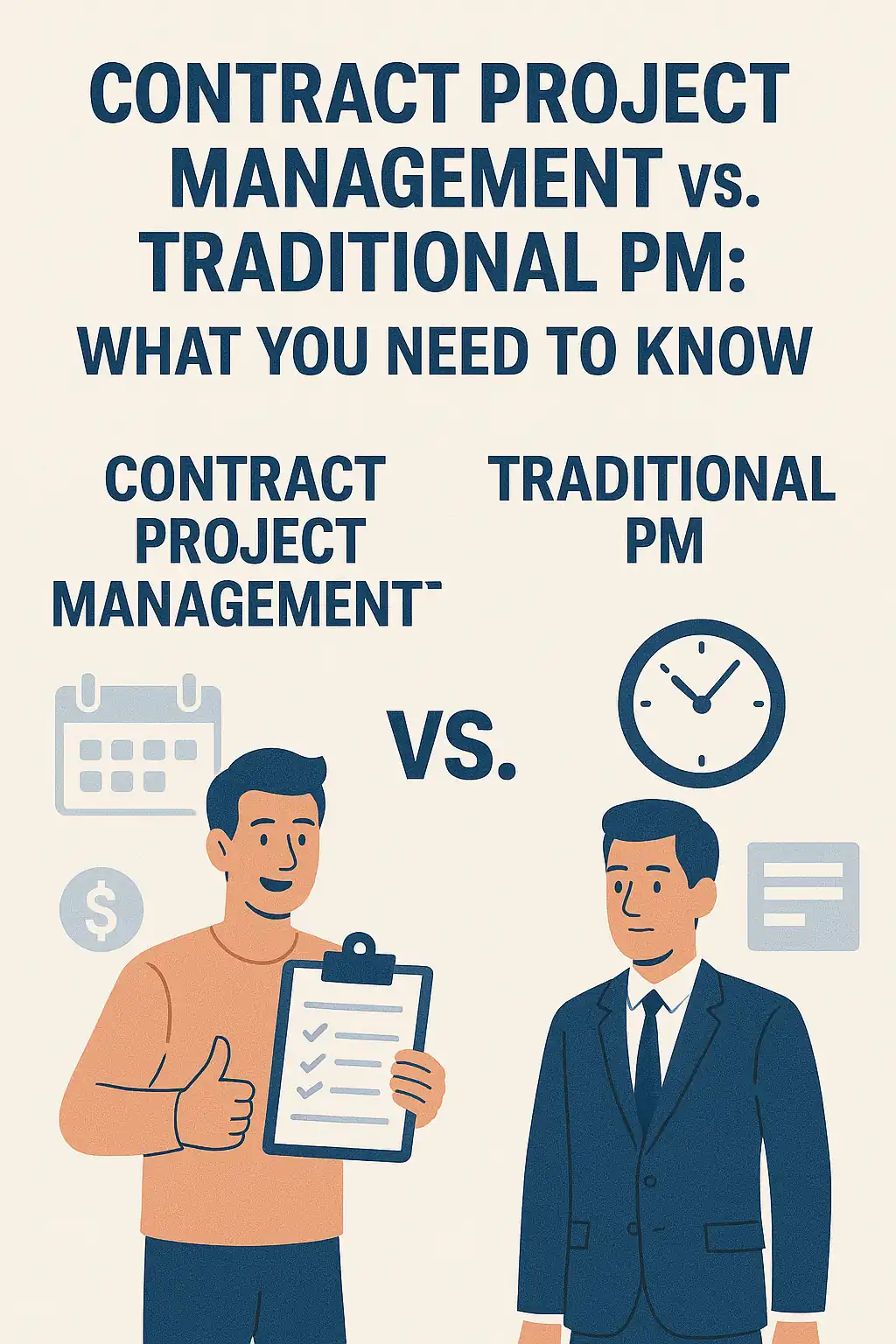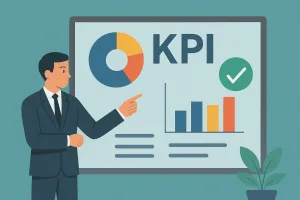Introduction
Understanding the various methodologies is crucial for professionals aiming to deliver successful outcomes. One such methodology is contract project management, which focuses on overseeing projects that are governed by specific contractual agreements. This approach is characterized by its emphasis on managing the lifecycle of contracts, ensuring that all parties adhere to their obligations, and mitigating risks associated with contractual relationships. Contract project managers are responsible for tasks such as planning, execution, and closing projects, while also ensuring compliance with the terms set forth in contracts [4][6].
In contrast, traditional project management follows a more linear and structured approach. It typically emphasizes upfront planning, where key factors such as cost, scope, and time are meticulously defined and monitored throughout the project lifecycle. Traditional project management methodologies often rely on established processes and frameworks, which can provide a clear roadmap for project execution but may lack the flexibility needed to adapt to changing circumstances [10][15].
Understanding the differences between contract project management and traditional project management is essential for project management professionals and students alike. Each methodology carries its own set of implications for project execution, risk management, and stakeholder engagement. By exploring these distinctions, project managers can better navigate the complexities of their projects, ensuring that they select the most appropriate approach for their specific needs and objectives. This comparative analysis will delve into the nuances of both methodologies, highlighting their strengths and weaknesses, and ultimately guiding professionals in making informed decisions in their project management practices.
Understanding Contract Project Management
Contract project management is a specialized area within the broader field of project management that focuses on the administration and oversight of contracts throughout the project lifecycle. This methodology is particularly relevant in industries where projects are heavily reliant on contractual agreements, such as construction, technology, and healthcare. Below are key points that define and characterize contract project management.
Definition and Scope of Contract Project Management
Contract project management involves the strategic management of contracts from their inception to completion. This includes the creation, execution, and monitoring of contracts to ensure compliance with terms and conditions, as well as the achievement of project objectives. The scope of contract project management encompasses:
- Contract Creation: Drafting and negotiating terms that align with project goals and stakeholder expectations.
- Execution and Monitoring: Overseeing the implementation of contract terms, ensuring that all parties fulfill their obligations.
- Risk Management: Identifying potential risks associated with contracts and developing strategies to mitigate them throughout the project lifecycle [7][10].
Common Contexts and Industries Where Contract PM is Utilized
Contract project management is particularly prevalent in several key industries, including:
- Construction: Projects often involve multiple contractors and subcontractors, making effective contract management essential for compliance and risk mitigation.
- Technology: Software development and IT projects frequently rely on contracts with vendors and service providers, necessitating careful oversight to ensure deliverables meet specifications.
- Healthcare: Contracts with suppliers, service providers, and regulatory bodies are critical in managing healthcare projects, where compliance and quality are paramount [6][13].
These industries benefit from contract project management due to the complexity and scale of their projects, which often require detailed contractual agreements to manage expectations and deliverables effectively.
Roles and Responsibilities of a Contract Project Manager
The role of a contract project manager is multifaceted and requires a unique set of skills to navigate the complexities of contract management. Key responsibilities include:
- Contract Oversight: Ensuring that all contractual obligations are met by all parties involved, which includes monitoring performance and compliance [5][11].
- Communication: Acting as a liaison between stakeholders, including clients, contractors, and legal teams, to facilitate clear communication and resolve any issues that arise [2][4].
- Financial Management: Managing budgets related to contracts, including tracking expenditures and ensuring that financial terms are adhered to [8][12].
- Problem Resolution: Addressing disputes or issues that may arise during the contract lifecycle, employing negotiation skills to reach satisfactory resolutions [3][10].
Understanding Traditional Project Management
Traditional project management (PM) is a structured approach that emphasizes a linear process for managing projects. It is characterized by its focus on upfront planning and a clear sequence of phases, which helps ensure that projects are completed on time, within budget, and to the required quality standards. Here are the core principles and practices that define traditional project management:
Definition and Core Principles of Traditional PM
- Definition: Traditional project management refers to a methodology that follows a sequential, linear process for project execution. It is often associated with fixed scopes, timelines, and budgets, making it suitable for projects with well-defined requirements.
Core Principles:
- Predictability: Emphasizes detailed planning and forecasting to minimize uncertainties.
- Control: Focuses on monitoring progress against the plan to ensure adherence to timelines and budgets.
- Documentation: Requires comprehensive documentation at every stage to maintain clarity and accountability.
Phases of Traditional Project Management
Traditional project management is typically divided into five key phases:
- Initiation: This phase involves defining the project at a high level, including its purpose, objectives, and feasibility. Key stakeholders are identified, and a project charter is often created to formalize the project’s existence.
- Planning: In this phase, detailed planning occurs. Project managers develop a comprehensive project management plan that outlines the scope, schedule, resources, and budget. Risk management strategies are also established to address potential challenges.
- Execution: This phase involves the actual implementation of the project plan. Project teams carry out the tasks defined in the planning phase, and project managers coordinate resources and manage team dynamics to ensure effective execution.
- Monitoring: Concurrent with execution, this phase focuses on tracking project performance against the established plan. Key performance indicators (KPIs) are used to assess progress, and adjustments are made as necessary to keep the project on track.
- Closure: The final phase involves completing all project activities, obtaining stakeholder acceptance, and formally closing the project. Lessons learned are documented to inform future projects, and project deliverables are handed over to the client or stakeholders.
Key Methodologies
Several methodologies are commonly used within traditional project management, each with its own set of practices and frameworks:
- Waterfall: This is one of the most widely recognized traditional methodologies, characterized by its linear approach where each phase must be completed before the next begins. It is best suited for projects with well-defined requirements and minimal expected changes.
- PRINCE2: An acronym for “PRojects IN Controlled Environments,” PRINCE2 is a structured project management method that emphasizes organization and control throughout the project lifecycle. It provides a clear framework for managing projects, focusing on delivering products that meet business needs.
- PMBOK: The Project Management Body of Knowledge (PMBOK) is a set of standard terminology and guidelines for project management. It outlines best practices and processes that project managers can follow to ensure successful project delivery.
Key Differences Between Contract PM and Traditional PM
Understanding the distinctions between Contract Project Management (Contract PM) and Traditional Project Management (Traditional PM) is crucial for professionals and students alike. Each methodology has its unique characteristics, implications, and approaches that can significantly impact project outcomes. Here are the key differences:
- Nature of Engagement: Contract PM typically involves a temporary engagement where project managers are brought in for the duration of a specific project. Their focus is on delivering the project within the agreed timeframe and budget, often under a contract that outlines specific deliverables and performance metrics. This contrasts with Traditional PM, where project managers may have a more permanent role within an organization, overseeing multiple projects over time and contributing to long-term strategic goals [1][4].
- Flexibility and Adaptability in Project Scope: Contract PM often requires a higher degree of flexibility and adaptability. Since projects can evolve based on client needs or market conditions, contract managers must be prepared to adjust project scopes and deliverables accordingly. In contrast, Traditional PM tends to follow a more rigid structure, with predefined scopes and objectives that are less likely to change once the project is underway. This rigidity can sometimes hinder responsiveness to new information or changing circumstances [2][15].
- Stakeholder Involvement and Communication Strategies: In Contract PM, stakeholder involvement is typically more pronounced, as contract managers must engage with various parties, including clients, legal teams, and finance departments, to ensure that contractual obligations are met. This often necessitates a more formal communication strategy to manage expectations and deliverables. On the other hand, Traditional PM may foster a more collaborative environment among team members, focusing on internal communication and teamwork to achieve project goals. The emphasis here is on building relationships within the organization rather than primarily with external stakeholders [3][9].
- Risk Management Approaches: Risk management in Contract PM is often more focused on legal and contractual risks, given the nature of the agreements involved. Contract managers must be adept at identifying potential risks related to contract fulfillment and ensuring compliance with legal standards. In contrast, Traditional PM encompasses a broader range of risks, including operational, financial, and strategic risks. Traditional project managers typically employ comprehensive risk management frameworks that address various aspects of project execution, from resource allocation to stakeholder engagement [10][11].
Advantages of Contract Project Management
Contract project management offers several distinct advantages that can significantly enhance project outcomes, particularly when compared to traditional project management methodologies. Here are some key benefits:
- Cost-effectiveness and Budget Management: One of the primary advantages of contract project management is its potential for cost savings. By utilizing fixed-price contracts, organizations can better manage their budgets and reduce the risk of unexpected expenses. This approach allows for clearer financial planning and accountability, as the costs are predetermined, which can lead to more efficient resource allocation and reduced financial risk throughout the project lifecycle [4][8].
- Access to Specialized Skills and Expertise: Contract project management often involves engaging external specialists or consultants who bring specific skills and expertise to the project. This access to a diverse talent pool enables organizations to leverage advanced knowledge and innovative solutions that may not be available in-house. Such collaboration can enhance the quality of project deliverables and ensure that best practices are followed, ultimately leading to improved project performance [5][10].
- Agility in Project Execution and Management: Contract project management methodologies tend to be more flexible than traditional approaches. This agility allows project teams to adapt quickly to changes in project scope, requirements, or market conditions. The ability to make adjustments without extensive bureaucratic processes can lead to faster decision-making and a more responsive project environment. This adaptability is particularly beneficial in dynamic industries where project parameters may shift frequently [6][12].
Challenges of Contract Project Management
Contract project management presents unique challenges that can significantly impact the success of projects. Understanding these challenges is crucial for project management professionals and students who aim to navigate the complexities of this methodology effectively. Here are some key challenges associated with contract project management:
- Short-term Focus and Sustainability Issues: One of the primary drawbacks of contract project management is its inherent short-term focus. Projects are often bound by specific timelines and deliverables, which can lead to a lack of emphasis on long-term sustainability. This focus may result in decisions that prioritize immediate outcomes over the enduring health of the project or organization, potentially compromising future success and viability [2].
- Integration with Existing Teams and Company Culture: Integrating contract project management practices with existing teams and the broader company culture can be challenging. Contract managers may face resistance from team members who are accustomed to traditional project management approaches. This cultural clash can hinder collaboration and communication, making it difficult to align project goals with organizational objectives. Effective integration requires careful management of team dynamics and a commitment to fostering a collaborative environment [1][8].
- Contract Management Complexities and Compliance: The complexities of contract management can pose significant challenges. Managing contracts involves navigating various legal and regulatory requirements, which can be daunting for project managers. Ensuring compliance with these regulations is critical, as failure to do so can lead to legal repercussions and financial penalties. Additionally, the need for meticulous documentation and record-keeping can add to the administrative burden, diverting attention from core project activities [5][10].
Best Practices for Effective Contract Project Management
The role of a contract project manager is pivotal, especially when comparing methodologies like contract project management and traditional project management. Here are some best practices that can enhance the effectiveness of contract project management:
- Establishing Clear Communication and Reporting Structures: Effective communication is the backbone of successful project management. It is essential to create a clear communication plan that outlines how information will flow between all stakeholders, including contract workers and permanent staff. This plan should specify reporting lines, frequency of updates, and the tools to be used for communication. By ensuring that everyone is on the same page, misunderstandings can be minimized, and project objectives can be met more efficiently [1].
- Fostering Collaboration Between Contract Workers and Permanent Staff: Collaboration is crucial in a project environment where contract workers and permanent staff must work together to achieve common goals. Encouraging a culture of teamwork can be facilitated through regular meetings, joint problem-solving sessions, and team-building activities. This not only helps in integrating contract workers into the project team but also enhances the overall productivity and morale of the group [1][4].
- Regularly Reviewing and Adjusting Project Scopes: In contract project management, the scope of a project can often change due to various factors such as stakeholder feedback, market conditions, or resource availability. It is vital to conduct regular reviews of the project scope to ensure that it remains aligned with the project goals and stakeholder expectations. This practice allows for timely adjustments and helps in managing risks associated with scope creep, ensuring that the project stays on track and within budget [1][10].
By implementing these best practices, project management professionals can navigate the complexities of contract project management more effectively, leading to successful project outcomes and enhanced stakeholder satisfaction.
Case Studies: Successful Contract PM Implementations
The distinction between contract project management (CPM) and traditional project management (TPM) methodologies is significant. To illustrate the effectiveness of CPM, we can examine several notable case studies that highlight successful implementations, the lessons learned, and the differences in outcomes compared to traditional approaches.
Overview of Notable Case Studies Highlighting Effective Contract PM
- Integrated Project Delivery (IPD) in Construction Projects: Several case studies have explored the application of Integrated Project Delivery (IPD) in construction, showcasing how CPM can enhance collaboration among stakeholders. These projects often demonstrate improved efficiency and reduced costs compared to traditional methods, as they leverage shared risk and reward structures to align the interests of all parties involved [4].
- Fortune 100 Corporation Implementation: A case study involving a Fortune 100 corporation illustrated the successful implementation of a contract management approach. This project highlighted the importance of structured frameworks and clear communication channels, which facilitated better alignment of project goals and stakeholder expectations [15].
- Commercial and Public Infrastructure Projects: An analysis of 24 published case studies worth $5.4 billion in commercial and public infrastructure revealed that CPM can lead to significant improvements in project delivery timelines and budget adherence. These projects often utilized advanced contract management techniques to mitigate risks and enhance accountability among contractors [9].
Lessons Learned from These Implementations
- Collaboration is Key: Successful contract project management relies heavily on collaboration among all stakeholders. The case studies emphasize the importance of establishing clear communication protocols and centralized repositories for contract management, which can lead to more effective problem-solving and decision-making [12].
- Adaptability and Continuous Improvement: The ability to adapt to changing circumstances is crucial in CPM. Projects that incorporated feedback loops and continuous improvement strategies were more likely to succeed, as they could quickly address emerging challenges [11].
- Proactive Risk Management: Effective risk management strategies were a common theme in successful CPM case studies. By identifying potential risks early and developing mitigation plans, project managers were able to minimize disruptions and maintain project momentum [11].
How These Cases Differ from Traditional Project Management Outcomes
- Enhanced Efficiency: Compared to traditional project management, which often follows a more linear and rigid approach, contract project management tends to be more flexible and responsive. The case studies indicate that CPM can lead to faster project completion times and better resource utilization due to its collaborative nature [4][11].
- Improved Stakeholder Satisfaction: The emphasis on communication and collaboration in CPM often results in higher stakeholder satisfaction. Traditional project management may struggle with misalignment of goals and expectations, whereas CPM fosters a shared vision among all parties involved [12].
- Risk Sharing and Accountability: In CPM, risks are typically shared among stakeholders, which can lead to a more equitable distribution of responsibilities. This contrasts with traditional methods, where risks may be disproportionately borne by one party, leading to conflicts and project delays [9][11].
Conclusion
Understanding the distinctions between contract project management (CPM) and traditional project management (TPM) is essential for professionals and students alike. Here are the key takeaways from our comparative analysis:
Main Differences:
- Scope and Flexibility: Contract project management typically operates within a fixed timeframe and budget, focusing on specific deliverables and outcomes. In contrast, traditional project management often emphasizes a linear process with upfront planning, allowing for adjustments as the project evolves. This rigidity in TPM can sometimes hinder responsiveness to changes, while CPM’s structured approach can enhance efficiency in meeting contractual obligations [2][10].
- Role of the Project Manager: In CPM, the project manager’s role is heavily centered around contract oversight, ensuring compliance with terms and managing relationships with vendors and stakeholders. Conversely, traditional project managers may have a broader focus, encompassing various aspects of project execution, including team dynamics and resource allocation [2][6][15].
- Risk Management: Contract management involves a unique set of risks associated with third-party contracts, necessitating specialized skills in negotiation and compliance. Traditional project management, while also concerned with risk, often addresses it through comprehensive planning and stakeholder engagement [7][8].
- Choosing the Right Methodology: The decision between contract project management and traditional project management should be guided by the specific needs of the project. Factors such as project complexity, stakeholder involvement, and the nature of deliverables play a crucial role in determining the most suitable approach. For projects with well-defined scopes and strict timelines, CPM may offer a more effective framework. Conversely, projects requiring flexibility and adaptability may benefit from the traditional methodologies [2][4][6].
- Encouragement to Explore CPM: As the landscape of project management continues to evolve, contract project management emerges as a viable and often advantageous option. Professionals are encouraged to delve deeper into CPM practices, tools, and strategies to enhance their skill set and improve project outcomes. Embracing this methodology can lead to better contract compliance, risk mitigation, and overall project success [3][5][8].
Find out more about Shaun Stoltz https://www.shaunstoltz.com/about/.
This post was written by an AI and reviewed/edited by a human.



